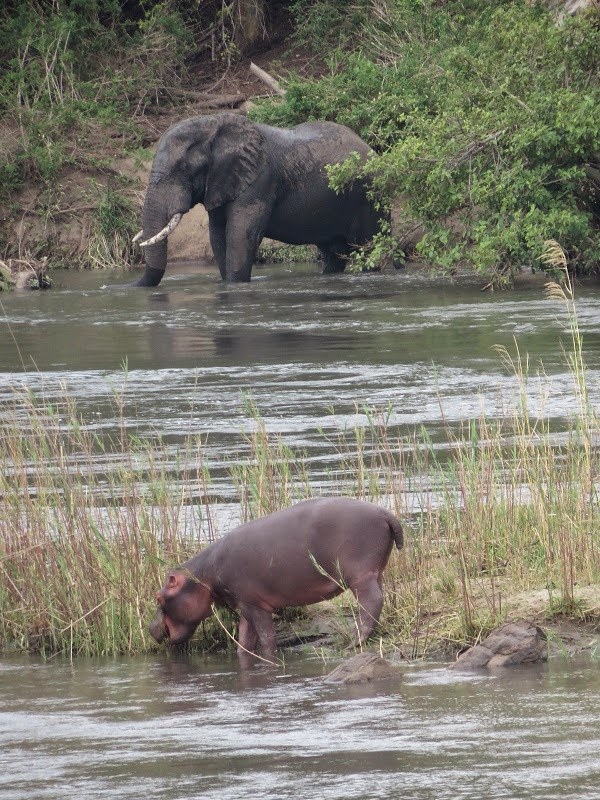For most Americans, Africa is
synonymous with wild animals—lions, wildebeests, elephants, giraffes, monkeys,
warthogs, zebras—and with majestic natural wonders—the Serengeti, the Rift
Valley, Victoria Falls, the great Zambesi.
To name a few, South Africa, Kenya and Tanzania boast world-famous parks,
overflowing with gigantic herds of hooved beasts, teeming with great flocks of migratory birds,
and having under foot every creeping thing. Most African
countries, including Zambia and Malawi, advertise game parks and safaris,
frequently featuring Africa’s great five--lions, Cape buffalo, rhinoceros, elephants,
and leopards—in an effort to capture some of the Western tourist monies flowing
into the continent.
Yet Malawi, unlike some of its
neighbors, is not known for offering great safari experiences. In the
recent past, it has tried to remedy this problem by reserving large tracts of
wilderness for game parks, in an effort to create reserves teeming with those
large game animals for which much of the sub-Saharan Africa is famous. Counterbalancing this effort, however, has
been an ongoing, and largely unresolved, tension between the villages and the poachers, on one hand, and the environmentalists and tourist
industry, on the other hand, as relates to the growth of national parks and the
stocking of them with large predators and animals of prey. Little over 30 years ago, few large animals,
including the great cats, were still found in significant numbers in Malawi. The villagers had hunted these large beasts into
extinction—in part to preserve their herds of domesticated animals--cattle, goats and sheep--from attack
by the big cats and in part to provide meat for their families. Poachers had virtually decimated the elephant
herds in their lust for the exceptionally valuable tusks. The parks, together with their animal
herds, have made a slow but steady, comeback over the last several
decades, both in Malawi and elsewhere in Africa, as the conservationist
movement has gained momentum and as government support for the fledgling
tourist industry has taken root.
Carole and I thought we would get a
chance to see some local parks before our mission’s end. We were, however, surprised to have an
opportunity to visit one of the local parks, Majete Wildlife Reserve, within
the first two weeks of our arriving in Blantyre. The sister missionaries (i.e., the three
pairs in Blantyre) planned the outing and asked us, and the Reynolds, one of
the other senior missionary couples, to provide the transportation. There
are some advantages in having access to one of the few trucks the Church owns in Blantyre.
Majete is found in the lower Shire
Valley, a section of Africa’s Great Rift Valley. Its vegetation ranges from moist woodlands to
dry savannahs to the dense thickets along the riverbanks of the Shire River. It is located in the Chikwawa District, one
of the 28 districts in Malawi, roughly an hour and a half by car from
Blantyre. Majete does not have the huge
herds of other parks, but it does feature a number of different species. Resident animals include the kudu, reedbuck,
duiker and bushbuck, and in the last decade, park management has reintroduced
at least 12 new species, including elephants, black rhinos, buffalo, elands,
sable, waterbucks, zebras, nyalas, hartebeests, and warthogs.
We toured the park without using a
local guide, nice to control the pace of our own visit, but at the expense of
learning much about the local species.
Neither Carole nor I can distinguish a kudu from an eland, nor a
reedbuck from a bushbuck. Our knowledge
of African game is pretty much limited to what we learned from reading children’s
books in our youth. Most of our grandchildren will be better informed about the different animal species than either of us.
In any event, the following are
photos taken during our one-day tour of Majete, proof for our grandchildren, at
least, that we are actually in Africa:
No big animals are left in Blantyre.
Years ago they were hunted to extinction.
Occasionally, we will see monkeys in the
trees outside of our compound--skittish, elusive creatures, quickly disappearing into
the bush and up into the upper tree limbs at the slightest disturbance.
Earlier
this week we understood better their hyperactive nerves, when we came across three
young boys, spears and loops in hand, stalking quietly several monkeys still on
the ground.














No comments:
Post a Comment